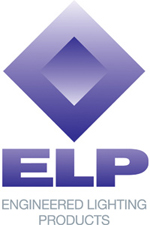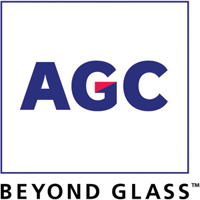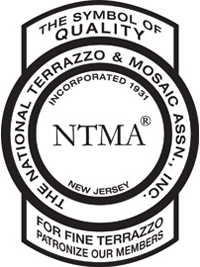School Buildings in 2015: Designing for Students
5. How Students Breathe
It is well known that building systems and materials have the potential to create a negative impact on the overall air quality in a building. Enclosed classroom spaces where students and teachers spend most of their time can accumulate unwanted things in the air they breathe including particulate matter, volatile organic compounds (VOCs), and other toxic materials that can have a variety of negative health impacts including respiratory issues, visual disorders, and memory impairment. The most prominent VOC, formaldehyde (present in many composite wood products), as well as Phthalates and Bisphenol A (BPA) (both present in many plastics used in construction), are still being studied. Further, moisture intrusion in building materials can lead to problems with mold contributing to respiratory illness and asthma.
How should we best deal with creating positive, healthy indoor air? One conventional means is to add more ventilation. According to researchers at Lawrence Berkeley National Laboratories, when ventilation rates are at or below minimum standards (roughly 15 cfm per student), an associated decrease of 5 to 10 percent occurs in certain aspects of student performance tests (LBNL IAQ Resource Bank). They also found that when ventilation rates were lowered from 17 cfm/person to 10 cfm/person, they saw a 15 percent increase in symptom prevalence for Sick Building Syndrome. All of this reinforces the significance of good ventilation but doesn't address the presence of the troubling materials in the first place.
Better Material Selection
The approach of green building design and construction is to use materials that don't contribute to the problem of indoor air quality. Selecting materials with very low or even no VOC content has become a common practice, particularly in schools, but there are other things that can be done as well.
Many school buildings have concrete floors, which of course require the use of water in their pouring and curing. If floor coverings are put down too soon, then some moisture may get trapped in the concrete and can eventually cause the deterioration and failure of the flooring, not to mention the creation of mold in the flooring material. In those cases, the floor covering needs to be removed and new flooring installed—a rather expensive and disruptive procedure that could have been avoided by specifying the most appropriate concrete mix for the school to begin with.
Fortunately, rapid-drying concrete is available for these situations in ready-mixed form that reduces the drying time and risks associated with excess moisture vapor in concrete slabs. This enables faster, more effective floor topping installations and, because of the reduced final moisture content, reduces the likelihood of mold formation. Peter Craig, a concrete floor specialist, observed, “Rapid-drying concrete dries naturally in as little as 30 days and because it consumes its free water internally, shrinkage and curling are significantly reduced.” He considers its use a “no-brainer” for any project where trapped moisture is a concern or where size tolerances are important.
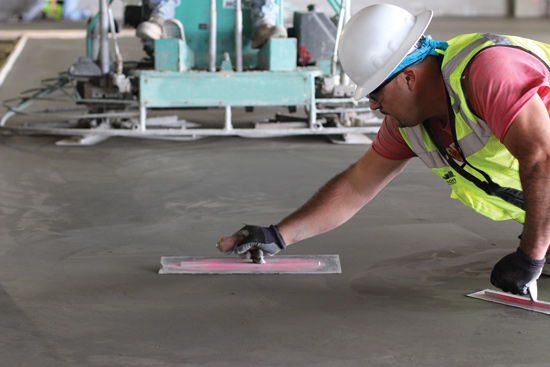
Photo courtesy of U.S. Concrete
Rapid-drying concrete can be specified to reduce the presence of retained moisture in floors that can help eliminate mold concerns in schools.
What about walls and ceilings when it comes to indoor air quality? Once again finding materials that have few if any problematic toxins or chemicals is the best place to start. But it is unlikely that they will be totally eliminated, particularly since they can be brought in from furnishings and equipment, raising the question of how to best address their presence. In response, a family of innovative gypsum board products has been developed that has been shown to help clean the air and improve indoor air quality. The specially formulated gypsum board permanently absorbs and removes specific VOCs and formaldehyde, the most prominent VOC, which may be circulating within indoor air. Using advanced technology, this class of gypsum board captures and converts formaldehyde into inert compounds, so that it cannot be re-emitted into the air. The effectiveness of the process has been tested in accordance with ISO 16000-23 and validated by UL Environment through their Environmental Claims Validation (ECV) program. It has been shown to continue to effectively clean the air even when used with multiple coats of water-based acrylic or epoxy paints and breathable wallpaper based on tests conducted by independent laboratories. It also contains materials that offer superior protection against moisture and mold. These gypsum board products can be installed and finished like regular gypsum board and are recyclable at the end of their useful life.
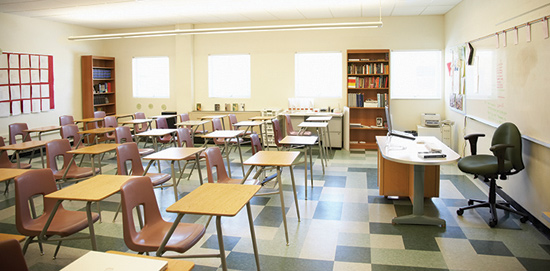
Photo courtesy of CertainTeed Gypsum
Specially formulated gypsum board can be used to absorb and eliminate specific VOCs from the air in classrooms. The VOCs are given off by furniture or other sources.
The Northern Lehigh School District in Pennsylvania remodeled an elementary school using gypsum board to improve indoor air quality and help control sound attenuation. Greg Deer, the director of support services for the school district, commented, “We've gotten very favorable results from the new classrooms—sound is contained, the spaces are very comfortable, indoor air quality has improved, and allergy complaints have dropped. The selected drywall was crucial to us achieving these results that have helped create a top-notch learning environment for our students.”
Reducing the Spread of Germs
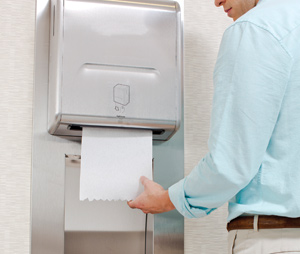
Photo courtesy of KIMBERLY-CLARK PROFESSIONAL*
Paper towels in dispensers have been shown to spread less bacteria than air dryers, thus helping to reduce possible sickness among students and teachers.
In addition to chemical concerns, school environments are notorious for contributing to the spread of germs and sickness. Given the concentration of children and the ease with which germs can spread, it is easy to see why students miss an average of 4.5 days of school per year while teachers tend to miss more at 5.3 days per year. Even if they are not out of school, when they are fighting off illness, they are often not functioning at their best.
Data shows one of the best ways to reduce the spreading of germs and absenteeism is by washing hands. However, a new European study has pointed out that drying hands is part of the equation too. Research on “Microbiological comparison of hand-drying methods: the potential for contamination of the environment, user, and bystander” carried out by expert medical microbiologists E.L. Best, P. Parnell, and M.H. Wilcox in England has been printed in the Journal of Hospital Infection (August 2014). It compared the spread of bacteria using three hand-drying methods: 1) jet-air style hand dryers, 2) warm air hand dryers, and 3) paper towels. In so doing, they documented that air dryers cause bacteria and water droplets to be blown into the air, onto users and bystanders, thus risking cross contamination between washroom users.
Among their specific findings:
• Air bacterial counts close to jet air dryers were 4.5 times higher than around warm air dryers and 27 times higher compared to using paper towels.
• Next to the dryers, bacteria persisted in the air well beyond the 15-second drying time, with 48 percent of microbes still airborne after 5 minutes. Some were still detected in the air 15 minutes after hand drying.
• Drying with warm air and jet air dryers resulted in widespread droplet release; contamination was found on all areas of the body demonstrating potential for spread and inhalation to other washroom users.
• Airborne bacteria were dispersed over 3 feet away within the first 5 minutes of sampling and bacteria were found over 6 feet away.
In response to these findings, it is suggested that paper towels be used for drying hands in washrooms. For environmental reasons, paper towels can be purchased that are made from recycled material and there are even some that are sourced from alternative non-tree fibers such as bamboo and wheat straw, which are rapidly renewable materials. For practical reasons, many school facility management departments prefer high capacity (over 1,000 feet) roll paper towel dispensing systems to reduce labor and reduce the risks of product run-outs. This may lead them to add high capacity dispensers with sustainably sourced paper products after the construction stage is complete. To prevent retrofitting after completion, discussions with the owner should take place ahead of time to allow appropriate space. Such dispensers can be manual or automatic and coordination with the vendor may be warranted for particular details. Similarly, dispensers for soap and hand sanitizer should be worked into the overall washroom design and coordinated as well.
6. How Students Feel
Studies dating back as far as the 1930s have supported the idea that classroom interiors needed to be kept within a small band of temperatures to feel comfortable, but, in recent years it has become evident that basic temperature control is not the whole story. Thermal comfort in schools is also related to other things such as user control, air velocity, clothing and activity level. This suggests that the ability to moderate and control temperature within a school space, relative to other factors is important. It also means that thermal comfort in schools needs to balance student needs along with lower energy consumption.
Wall Construction
The thermal comfort of all buildings is directly influenced by the design and construction particulars of the exterior wall assembly. The combination of interior and exterior cladding surfaces along with the appropriate air, water, and vapor barriers plus thermal insulation combine to control the flow of heat, moisture and air through the total assembly. In school buildings, the added requirements of durability and longevity are needed which leads many architects to choose brick and masonry. By combining well known and proven construction techniques, exterior cladding using architectural brick helps create an energy-efficient, long-lasting wall system that is relatively maintenance free and easy to care for.
Brick use isn't limited to exterior use of course. By incorporating it within the thermal envelope of a building, it can function and be recognized as thermal mass which moderates uncomfortable temperature swings and helps with energy code compliance. In this manner, it isn't limited to walls, but is often used on floors in the form of pavers or tile over an appropriate substrate. The end result is a more comfortable indoor learning environment that helps students and teachers all around.
Brick has the additional characteristic of being available in a wide range of colors and textures to suit a variety of design intents to create buildings that can be warm and inviting or striking and bold. Gary Davis of Endicott Clay Products has found that “Architects are constantly on the search for exterior cladding products that can make their next project unique while enhancing efficiency. They want to make a statement while creating a building that meets or exceeds user expectations. They can find both when they work with brick.” This has been evidenced in the newly created Hunter's Point Community School at the Hunter's Point Campus in the borough of Queens, New York.
The building is clad in manganese ironspot utility size brick and incorporates numerous special shapes. It was conceived by FXFOWLE as a dark rock anchoring a developing neighborhood on the waterfront along New York City's East River. The dark brick color complements the formidable presence of this structure and makes a strong statement when viewed from the United Nations headquarters across the river in Manhattan. “You can't even put a value on it, it's so fabulous,” says Edgar Rodriguez, the high school principal. “We have the most beautiful school building in the whole city.”
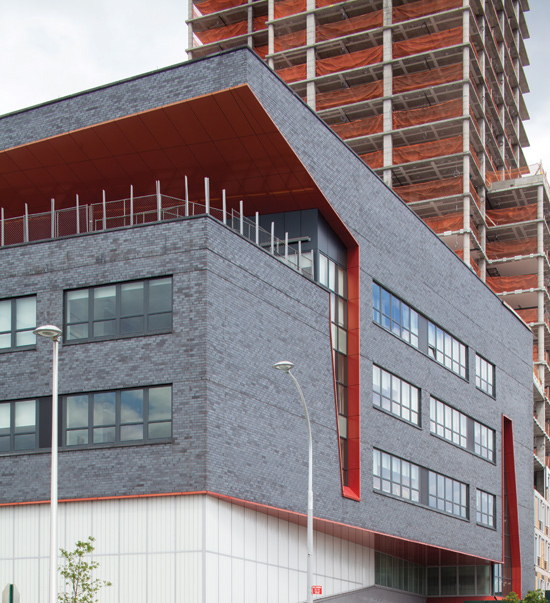
Photo courtesy of Endicott Clay Products
The striking color of the brick on the Community School at Hunter’s Point Campus in New York also serves as a durable and efficient cladding.
Innovative HVAC Systems
Once the building envelope and materials are addressed, then the HVAC systems become the focus of regulating how students feel within a learning environment. An innovative strategy in this regard is the use of Variable Refrigerant Flow (VRF) zoning as an energy-efficient method of providing precise comfort control to indoor environments. It is based on setting up thermal zones, which are single or multiple room spaces that are conditioned to a set temperature, each with the ability to be independently operated and controlled. VRF systems utilize ductless technology moving refrigerant, instead of air, directly to each specific zone to be cooled or heated. The rate of refrigerant flow is based on personalized demand and temperature settings, thus allowing the thermal conditions of each zone to be more precisely controlled. Some VRF systems can simultaneously cool some zones while heating others or provide personalized comfort control only to zones that are in use. VRF systems can be used with individual zone controllers located within the space or with larger, centralized controllers used to tie an entire building's HVAC, and other mechanical systems, together. Each indoor unit also contains a filter to assist in providing higher quality air to the space. Since VRF zoning units do not require the use of ductwork, the potential for particulates to build up or become introduced to the space is eliminated.
VRF technology was used quite successfully for an energy efficient renovation of the 1960s era Falmouth Elementary School in Stafford, Virginia. The existing through-wall unit ventilators on a two-pipe system were not only inefficient, they weren't working properly. The design team brought in to solve the problem included b2E Consulting Engineers of Leesburg, Virginia who, working with the school district, decided on a new mechanical system that included a VRF zoning system. b2E Founder, Bruce E. Beddow, PE said, “As a result of installing the VRF zoning system, we were able to keep the original ceiling heights and planned suspended ceiling heights, improve lighting levels, reduce sound levels in classrooms, and improve occupant comfort.” From a utility bill comparison, it appears that they met their goal. The Facilities Office of the school district estimates a 25-30 percent average reduction in energy use, which is impressive considering that the building size also increased by about 20 percent or 13,000 square feet.

Photo courtesy of Mitsubishi Electric Cooling & Heating
Ductless Variable Refrigerant Flow (VRF) HVAC units can be located strategically in specific rooms to allow for energy-efficient and comfortable thermal control of those spaces.
Conclusion
There is no single strategy that will assure a successful school project. Rather, the best results require a holistic approach to achieve healthier, safer, and more efficient learning environments. This is true whether we are working on new school construction or existing buildings. Either way, the true measure of success is the impact on the students, teachers, and staff who benefit from better, more positive experiences because of the design decisions made along the way.
 |
||
 |
 |
|
 |
||
 |
||
Notice
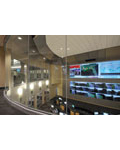
www.pyrosafeglass.com
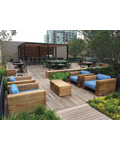
www.BisonIP.com

www.certainteed.com/airrenew

www.dorma.com/
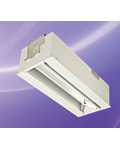
www.elplighting.com/

www.endicott.com/
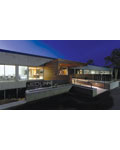
www.SunGuardGlass.com/
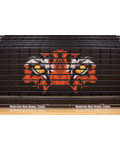
www.husseyseating.com/
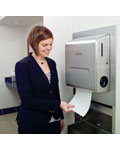
www.kcprofessional.com/
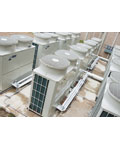
www.MitsubishiPro.com/
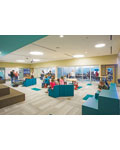
Architect: Hollis + Miller Architects
www.NanaWall.com/
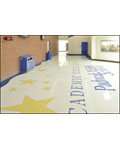
www.ntma.com/

www.nichiha.com/
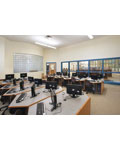
www.pittsburghcorning.com/
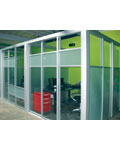
www.spaceplus.com/
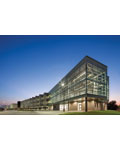
www.us-concrete.com/aridus/
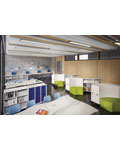
www.vs-network.com/











